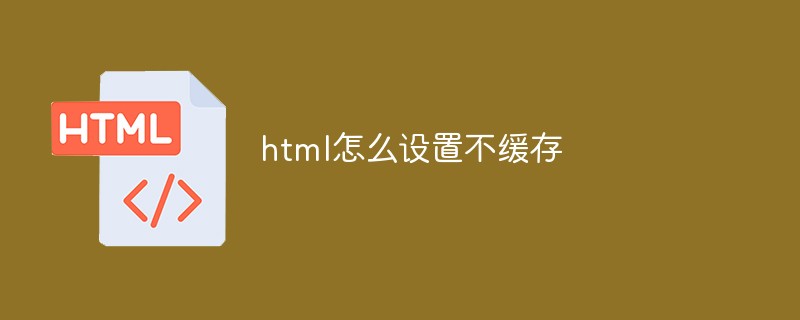How to set html not to be cached
May 13, 2021 am 10:17 AMhtmlThe way to set no caching is to enable Cache-Control in HTTP1.1 to control the caching of the page, and set the no-cache value so that neither the browser nor the cache server should cache the page information.

The operating environment of this article: windows7 system, HTML5 version, DELL G3 computer
Set no caching in the html header
1 2 3 4 |
|
HTML's HTTP protocol header information controls the cache information of the page in several places, including the browser side, the intermediate cache server side (such as squid, etc.), and the Web server side. This article discusses the caching situation of HTML pages with cache control information in the header information (HTML pages generated by JSP/Servlet) in the intermediate cache server.
The cache header keywords in the HTTP protocol include Cache-Control (HTTP1.1), Pragma (HTTP1.0), last-Modified, Expires, etc.
In HTTP1.0, page caching is controlled through Pragma, which can be set: Pragma or no-cache. There are many articles on the Internet explaining how to control not allowing browsers or intermediate cache servers to cache pages. The value is usually set to no-cache, but this value is not so safe. Expires is usually set to 0 to achieve the purpose. But if we deliberately need the browser or cache server to cache our page, this value must be set to Pragma.
Cache-Control is enabled in HTTP1.1 to control whether the page is cached. Here are some commonly used parameters:
no-cache, browser and cache No server should cache page information;
public, both browsers and cache servers can cache page information;
no-store, request Neither the response information nor the response information should be stored in the other party's disk system;
must-revalidate, for each request from the client, the proxy server must verify with the server whether the cache is out of date;
Expires expires value, in GMT format, which means that the browser or cache server must obtain new page information from the real server after this point in time;
Recommended learning: "HTML Video Tutorial"
The above is the detailed content of How to set html not to be cached. For more information, please follow other related articles on the PHP Chinese website!

Hot Article

Hot tools Tags

Hot Article

Hot Article Tags

Notepad++7.3.1
Easy-to-use and free code editor

SublimeText3 Chinese version
Chinese version, very easy to use

Zend Studio 13.0.1
Powerful PHP integrated development environment

Dreamweaver CS6
Visual web development tools

SublimeText3 Mac version
God-level code editing software (SublimeText3)

Hot Topics
 How do you parse and process HTML/XML in PHP?
Feb 07, 2025 am 11:57 AM
How do you parse and process HTML/XML in PHP?
Feb 07, 2025 am 11:57 AM
How do you parse and process HTML/XML in PHP?













